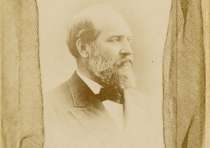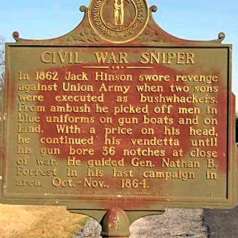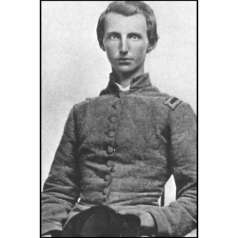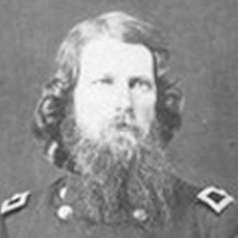
James A. Garfield was lieutenant-colonel of the 42nd Ohio Volunteer Infantry Regiment in 1861, quickly becoming a general. As William S. Rosecrans' Chief-of-Staff, Garfield was largely responsible for the Tullahoma Campaign, an almost bloodless operation that outflanked Braxton Bragg's Army of Tennessee and sent it in retreat to Chattanooga and then north Georgia. When Garfield’s brigade arrived at Shiloh, April 7, 1862, the enemy was already retreating. The brigade “stood amid the roar of the battle, the shells bursting around us occasionally, and the grape shot falling on all sides.” They eventually received orders to pursue the Confederates; after a sharp, short battle with the rear guard, Garfield was called back to Shiloh. Remaining near Shiloh for nearly three weeks, Garfield discovered a small camp of Confederates in the trees nearby. A surgeon and a few assistants tended to 30 or so wounded soldiers. Garfield sent food and water and buried the dead, noting that “dead men were lying in among the living, and [the] sight and smell were terrible.” Garfield wrote to his wife that he “could never describe” the “horrible sites we have witnessed on this field.” On another day, a runaway slave with a head wound dashed through camp. A man claiming to be his owner followed in hot pursuit. The division commander ordered Garfield to find and return the man to the owner at once. Despite the possibility of a court-martial for disobeying, Garfield flatly refused, saying, “I respectfully, but positively, decline to allow my command to search for, or deliver up, any fugitive slaves. I conceive that they [Garfield’s soldiers] are here for quite another purpose.” Pursuing the retreating Confederates, Garfield’s brigade soon engaged a force of cavalry units. Garfield was one of many Civil War veterans to engage in politics; in 1863, he resigned from military service to serve in the House of Representatives. Garfield eventually became the 20th President of the United States in 1880. After four months in office, Charles J. Guiteau shot him twice. Garfield struggled infection and severe pain before dying on September 19, 1881.
Tools
Key Facts
- Known for humane treatment of the enemy
- Instrumental in the almost bloodless but highly effective Tullahoma campaign
- Served in Congress, became 20th President; died after being shot by an assassin






